Online role-playing games are long-lived
Gamers like to recall the classics of the genre, but usually they mean those games that came out in the early or mid-2000s - for example, World of Warcraft and Lineage 2. Rare fan, talking about old MMORPGs, will remember such works as Meridian 59, Kingdom of Drakkar or Ultima Online. And they're still active today - you can create an account, get over your aversion to badly aged graphics, and play alongside hundreds of other people. To think, some of these projects started at the very dawn of the internet! So how did online battles happen before? Let's take a look back at some of the most interesting role-playing longevity projects and their features.
Meridian 59
This game is considered to be the first MMORPG in history. Moreover, it was three-dimensional from the very beginning, not 2D, as was customary at the time of its creation. For such an unusual and advanced project was taken in the early 1990s by a small team Archetype Interactive. It was led by Steve and Michael Sellers, and the team also included Chris and Andrew Kirms, Damion Schubert and John Hanke - the latter later became famous as the author of Google Earth and Pokemon Go. The developers took MUD (Multi-user Dungeon) games as a basis for their work. This is a variant of Dungeons & Dragons, where players sit not at a common table, but in a text chat, where the leader (master) describes the situation in words, and the rest of the same way, typing lines, react to what is happening.
Except that to the usual chat added pictures and interactive objects to the fantasy universe to play with colors. The developers defined the genre of their creation as "graphic MUD", but it was at the briefings of Archetype Interactive that the word Massively Multi-Player Role-Playing Game was first heard. An early version of the project was ready by 1995, although a technical problem remained - the use of network technology. At that time there was no widely available Internet, so gamers gathered parties on university servers or with the help of private commercial networks. Only in the spring of 1995 there was a solution - the U.S. government gave businesses access to the world's largest scientific network NSFNET, which then served as the basis of the Internet.
Except that to the usual chat added pictures and interactive objects to the fantasy universe to play with colors. The developers defined the genre of their creation as "graphic MUD", but it was at the briefings of Archetype Interactive that the word Massively Multi-Player Role-Playing Game was first heard. An early version of the project was ready by 1995, although a technical problem remained - the use of network technology. At that time there was no widely available Internet, so gamers gathered parties on university servers or with the help of private commercial networks. Only in the spring of 1995 there was a solution - the U.S. government gave businesses access to the world's largest scientific network NSFNET, which then served as the basis of the Internet.
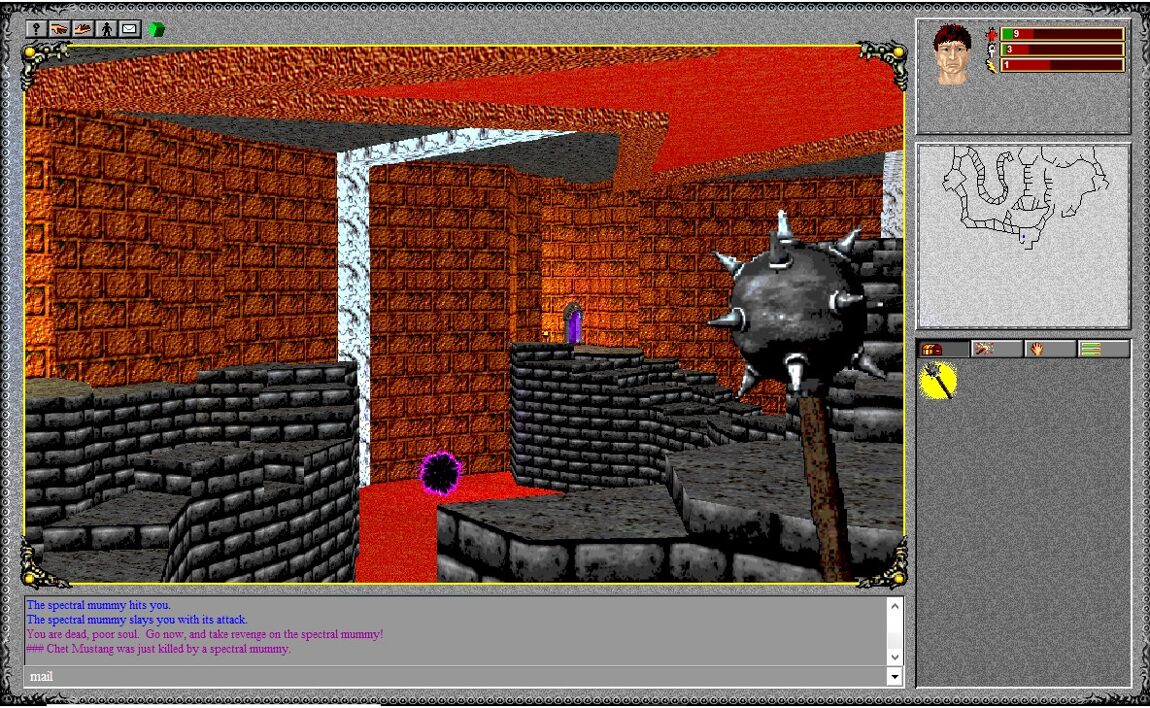
The 3DO company was interested in the game using advanced technology. In the mid-1990s, it was the largest American publisher and even released its own console in cooperation with Panasonic. The deal was made and Archetype studio became a part of the corporation, and Meridian 59 received good publicity. D&D fans found everything they were looking for here: a deep role-playing system with character creation and wagering, PvP-battles, guilds, an empire map with six villages and the capital in Barlok, artifacts and named weapons. But there were no levels or classes in M59 - instead, heroes were encouraged to develop skills in one of seven schools. Teachers from "Riya", for example, could teach deception and illusion creation, students of "Kraanan" learned the basics of combat enhancement, and in "Faren" tamed the forces of nature - earth, water, air.
Initially, Meridian 59 could be played only by monthly subscription - later this scheme was adopted by publishers of other MMORPGs, including World of Warcraft. But today the legendary game is available on Steam for free - as a tribute to the classic.
Initially, Meridian 59 could be played only by monthly subscription - later this scheme was adopted by publishers of other MMORPGs, including World of Warcraft. But today the legendary game is available on Steam for free - as a tribute to the classic.
Kingdom of Drakkar
If MMORPG fans have heard something about Meridian 59, Kingdom of Drakkar remains a "dark horse" for the majority, although this game is several years older than Archetype Interactive's work. Its story began in 1984, when programmer Brad Lineberger created a Fortran-based MUD called The Realm. The client took up 16 KB of disk space (even for those times it was not much), but it supported a party of 40 gamers. With the help of Tantalus employees, the author added an interface and pictures to his project, and at the same time increased the number of network connections to 200. The graphics, of course, was two-dimensional, but in the end it turned out to be a full-fledged MMO-game - for 1989 it was a novelty.
Using a choice of six races and seven classes, players created their own characters and went to fight monsters on screens-locations (or hexes). There are 250,000 hexes on the global map - just enough for hours of adventure. Dungeons and cities like Nork were inhabited by monsters, who got into the fantasy idyll through the fault of the evil empress, and the connection of some battlefields with others was provided by portals. Who wanted to learn a profession, could turn to one of the masters, although NPCs in the game was not so much. It is clear that not all people were able to challenge the orcs and ogres in the early 1990s, but only owners of multimedia computers at the level of Amiga 1000.
Using a choice of six races and seven classes, players created their own characters and went to fight monsters on screens-locations (or hexes). There are 250,000 hexes on the global map - just enough for hours of adventure. Dungeons and cities like Nork were inhabited by monsters, who got into the fantasy idyll through the fault of the evil empress, and the connection of some battlefields with others was provided by portals. Who wanted to learn a profession, could turn to one of the masters, although NPCs in the game was not so much. It is clear that not all people were able to challenge the orcs and ogres in the early 1990s, but only owners of multimedia computers at the level of Amiga 1000.

The peculiarity of the project was the categorical rejection of PvP. One hero could, of course, attack another, but in such a case he would be severely punished. If there was still a misunderstanding, it was enough to hug the opponent - and thus avoid the penalty. There were plenty of such unusual and advanced solutions in the game. What caused difficulties was the realization of multiplayer. At that time, of course, no one had ever heard of the Internet. Lineberger had to create his own platform MPG-Net - the same as the popular at that time AOL and CompuServe. The developers believed that their own network would be the cornerstone of the project's development after its release in 1994. But a year later NSFNET was opened, and the MPG-Net audience did not exceed 25,000 subscribers even at its peak. This was a time bomb for one of the first MMORPGs.
After a while, the game was acquired, then shut down. However, its creator Brad Lineberger bought back the rights in 2001 and relaunched it on an updated 24-bit engine. To play Kingdom of Drakkar today, you need to create an account on the official website and download the client to your computer from there.
After a while, the game was acquired, then shut down. However, its creator Brad Lineberger bought back the rights in 2001 and relaunched it on an updated 24-bit engine. To play Kingdom of Drakkar today, you need to create an account on the official website and download the client to your computer from there.
Ultima Online
While Kingdom of Drakkar and Meridian 59 were the entertainment of American geeks, students, and D&D fans in their early days, Ultima Online was the first MMORPG of global significance, making the genre famous far beyond the campuses. And the name of its author, Richard Garriot, is now known not only to fans of role-playing multiplayer. Garriot started with a budget of 2.5 million dollars and an ambitious idea to surpass everything that had been done before him. If competitors offered hundreds of connections, "Ultima" had to provide thousands, where others cluttered interfaces on half of the screen, Richard wanted to minimize the inscriptions and numbers, so that everyone enjoyed the pictures of battles and magic. And UO was made for the Internet - for modem users.
Having gathered a team of the same MUD fans, Garriot started to realize his grandiose plans. Demo version was presented at the E3 exhibition in the spring of 1996 under the name Ultima Online: Shattered Legacy. The audience was really impressed by the demo, as no other online game had such a wide range of options. Here players not only created heroes, but also had the full freedom of PvP-battles, economy based on crafting and personal possessions in the virtual world with the development of estates. The authors also promised a simulation of life based on algorithms, but the idea was so complicated that it was later abandoned.
Having gathered a team of the same MUD fans, Garriot started to realize his grandiose plans. Demo version was presented at the E3 exhibition in the spring of 1996 under the name Ultima Online: Shattered Legacy. The audience was really impressed by the demo, as no other online game had such a wide range of options. Here players not only created heroes, but also had the full freedom of PvP-battles, economy based on crafting and personal possessions in the virtual world with the development of estates. The authors also promised a simulation of life based on algorithms, but the idea was so complicated that it was later abandoned.
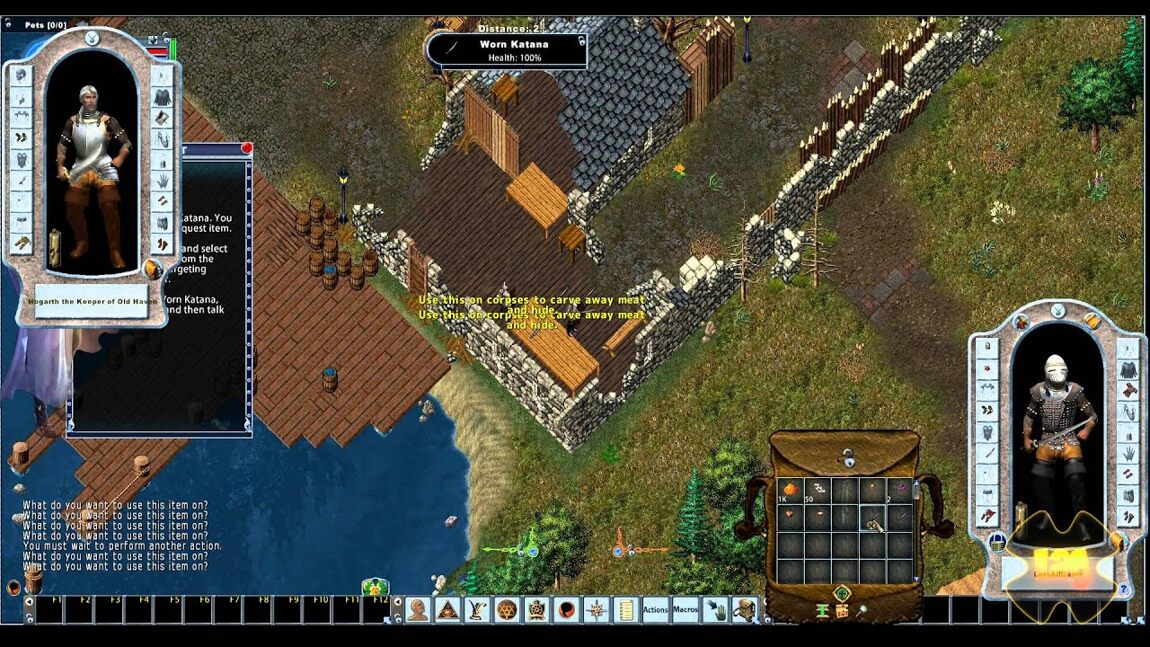
The game was officially released in September 1997, and in the first six months it received over 100,000 paid subscriptions. Two years later, its servers started working all over the world and gained up to 250,000 connections at the peak. Of course, not everything went as smoothly as the developers wanted. The public appreciated the freedom of wagering, but the pumping system was complicated at the time of release and remains so to this day. There were also technical difficulties - like server crashes from the influx of adventure-hungry public. But all this doesn't change the fact that Ultima paved the way for many MMORPGs and made millions of people interested in the genre. If you want to join their ranks, today the game is available for free - you can download it from the digital store of Electronic Arts, which owns the rights to Garriott's universe.
Tibia
It was not only Americans who dreamed of creating multiplayer virtual worlds. In the mid-1990s, four German students decided to build their own MMORPG. At first Guido Lübke, Stefan Payer, Ulrich Schlott and Stefan Vogler called their project CIP Productions, but then the game got a more familiar name. Like their counterparts from across the ocean, the Germans were inspired by numerous MUD games, but then they realized that the most advanced development in the field was being done in the United States. As Stefan Vogler said in an interview, the four of them almost got a job on the team making Ultima Online. Perhaps Ultima would have benefited from that, but then we'd hardly get Tibia. The first RPG MMO from Germany was released on January 7, 1997. And it turned out to be groundbreaking in many ways.
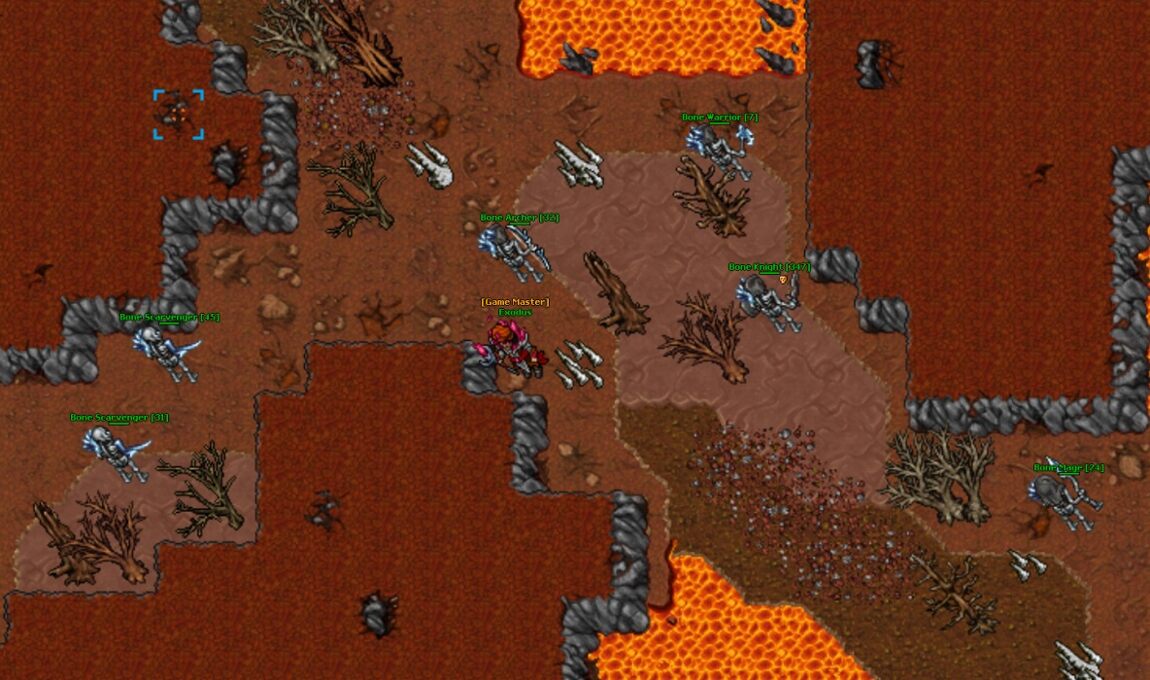
On the one hand, Tibia was a typical 2D RPG of that era: you create a hero, kill monsters in dungeons, join clans and guilds, perform quests from NPCs, decorate your virtual house as you like, learn the professions of a knight, paladin, druid or sorcerer. On the other hand, the lack of funds and opportunities forced the developers to take some radical measures. Tibia authors used the institute of game-masters, as in classic D&D: they gave the most active and honest gamers characters with superman skills to keep order on the map. This was a common measure for beta tests (Garriot's alter ego in Ultima, for example, was called Lord British), but for the final version of the game, this was a novelty. The Germans were also among the first to switch to the free-to-play model.
Tibia is still available for free. To play it, you need to register on the official website and download the client to your computer.
Tibia is still available for free. To play it, you need to register on the official website and download the client to your computer.
Lineage
We've gotten used to the fact that the lion's share of all MMORPGs are made in Korea. But this was not always the case. In the 1990s, the genre was ruled indiscriminately by developers from the United States. Sooner or later someone had to challenge them. And that person was Tak Jin Kim, the founder of the then little-known NCSoft company. He realized that to succeed it is necessary to surpass the Americans on all fronts, so he immediately conceived a grandiose project - without half-measures. As the basis of the plot, the developers took the work of Korean writer Shin Ilsuk "Ancestry" (i.e. Lineage), which tells the story of a prince who returns his heritage and fights against the usurper.
The artist of the new project is Jake Song, who was recruited from another team that worked on the MMO game Nexus: The Kingdom of the Winds. As a producer the Koreans invited not just anyone, but the author of Ultima Online Richard Garriott himself. And this undoubtedly influenced the look of Lineage - elements of European fantasy and D&D mechanics appeared here, not only Asian folklore. At the same time, from a technical point of view, the game was a step forward compared to its competitors, including even Ultima. Suffice it to say that Lineage was the first online game with castle sieges and RvR format wars, i.e. "server vs. server". No one could offer such mass battles in 1998.
The artist of the new project is Jake Song, who was recruited from another team that worked on the MMO game Nexus: The Kingdom of the Winds. As a producer the Koreans invited not just anyone, but the author of Ultima Online Richard Garriott himself. And this undoubtedly influenced the look of Lineage - elements of European fantasy and D&D mechanics appeared here, not only Asian folklore. At the same time, from a technical point of view, the game was a step forward compared to its competitors, including even Ultima. Suffice it to say that Lineage was the first online game with castle sieges and RvR format wars, i.e. "server vs. server". No one could offer such mass battles in 1998.
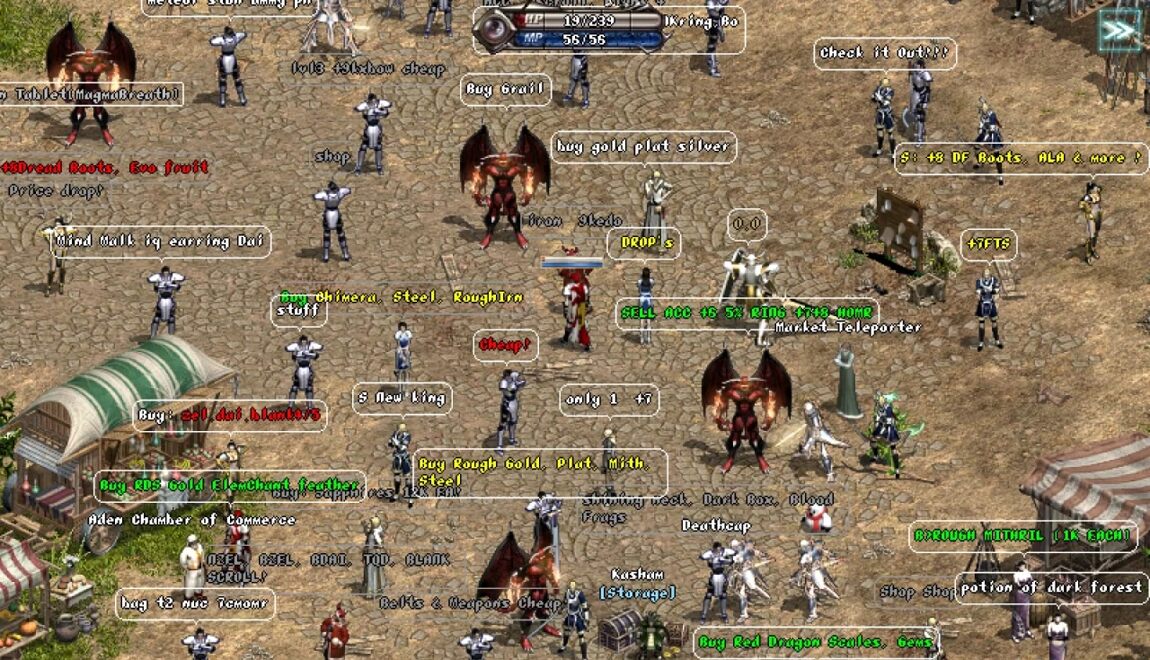
Although the life of the virtual world was based on the mechanics of land ownership (castle owners set taxes, dictate the rules of guilds and wage wars among themselves), the classic elements of role-playing games have been incorporated here. Users create heroes, choosing between ordinary and dark elves, knights, mages, dragons, illusionists and princes. The latter are the only class capable of founding guilds. At the same time there are enough traditional quests with killing monsters. Free PvP battles bring not only loot, but also additional characteristics of fighters - for example, an increase in strength, the appearance of traits of chaotic or neutral. These are the ones that affect how NPCs like guards and even enemies treat you. In general, NCSoft gave its game those features that we call today "Asian style".
Today the second part of Lineage is much more popular, but if you want, you can play the first one as well. Although it is not officially supported, enthusiasts keep their servers afloat, including Russian-speaking ones. As they say, those who are looking for it will always find it. Well, or start your own server, using the manual from the Internet.
Today the second part of Lineage is much more popular, but if you want, you can play the first one as well. Although it is not officially supported, enthusiasts keep their servers afloat, including Russian-speaking ones. As they say, those who are looking for it will always find it. Well, or start your own server, using the manual from the Internet.
EverQuest
Let's remember the game that has been pleasing the public since 1999 and clearly shows the connection between classic and modern MMORPGs. Surely many of you know about New World - an ambitious and beautiful project of Amazon Games. But few people know that the general manager of this company John Smedley started his career at Verant Interactive studio, where he made EverQuest together with the same Dungeons & Dragons fans Brad McQuaid, Steve Clover and Bill Trost. They gathered the successful finds of Meridian 59 and The Realm Online to come up with the world of Norrath with all its characters and wonders. In November 1997, beta testing of the game began, and on March 16, 1999, it was released under the auspices of Sony, briefly overtaking Ultima Online in terms of subscribers.
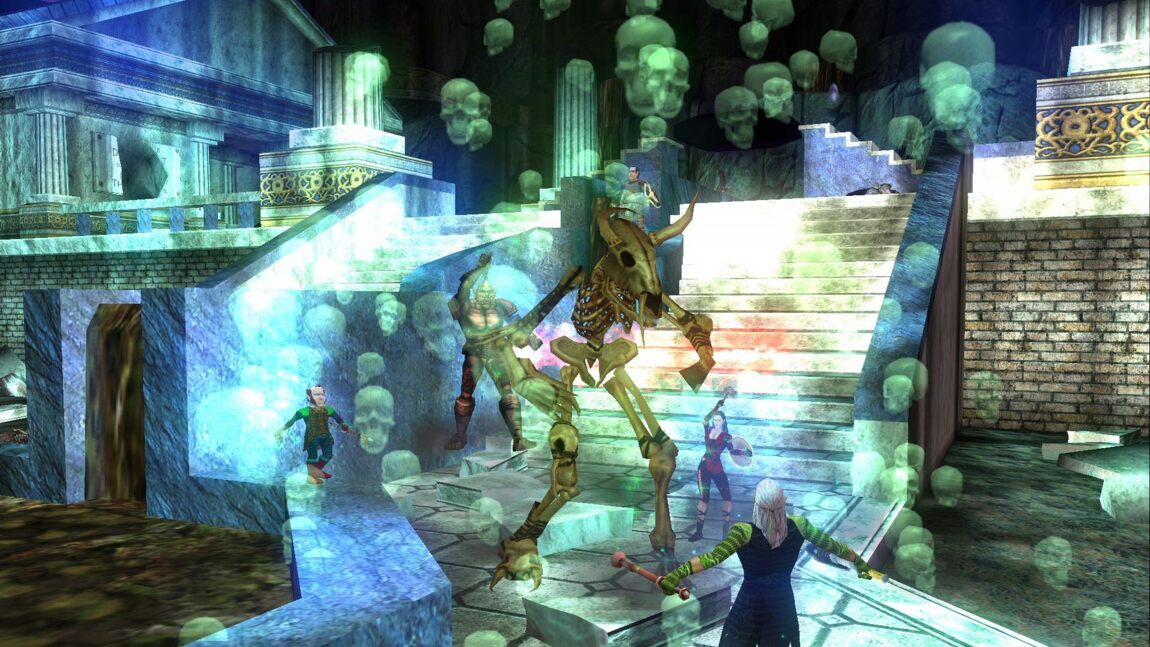
EverQuest was originally conceived as a technological 3D game based on text-based MUDs. The gamer was free to choose from twelve races (there are five kinds of elves alone) and several professions. The map of Norrath was divided into more than five hundred zones, where you could hunt for treasures, fight with monsters or other heroes under the control of live players. In general, traditional for the genre activities that are now considered canon. Over time, Verant Interactive's project received a lot of updates, but its fundamentals remained the same as 25 years ago. To make sure of it, just download the game from the Steam store, where it is available for free.
And what MMORPGs of the last century that are still active today are known to you?
And what MMORPGs of the last century that are still active today are known to you?
23 June 2024